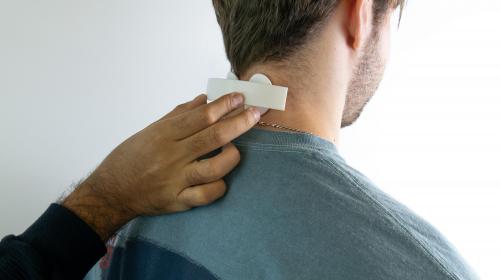Misconceptions when designing for ingress protection
When designing products it is important to consider the environment that the device needs be used or stored in. Whether it be a glucose monitor that the user can wear in a shower, satellite phones used in extreme weather conditions or medical equipment used in laboratory conditions, one thing that plays a critical role in ensuring the longevity and functionality of these devices is ingress protection and suitability for use in their respective environment.
Sometimes it is defined by a standard, for example 60601-1 specifies that medical electrical equipment shall provide protection against at least IP21. Other times this is something that needs to be specified & requires a solid understanding of the use case of the device & its specific requirements. Understanding common misconceptions around ingress protection will help define meaningful specifications & ensure the device is appropriately designed.

First, stop using the word 'waterproof'
Waterproof is thrown around often when talking about devices, but what does this actually mean? To one person waterproof means a coat will keep them dry, another this means they can use their phone in the rain – or can they use it in a swimming pool? The ambiguity of the term can create confusion. Instead, use “water resistant”. The term resistant opens the question of how resistant? And is water the only thing the device needs to be protected against?
The IP Rating Scale
The IP rating scale, as defined by the International Electrotechnical Commission (IEC), is a standard that classifies the degree of protection a device offers against ingress of not just water, but also solid objects and dust. The classification is defined by two numbers, detailed in the below table. Further information can be found in IEC 60529 – Degrees of protection provided by enclosures.
Also, although the IP rating scale is one of the more widely used standards for ingress protection, it is worth being aware that this isn’t the only standard and depending on what the device is there may be more appropriate scales. The watch industry typically denotes the level of water resistance in ATM (a unit of pressure) which then equates to a theoretical depth under water. Products used within military applications may be designed to MIL-STD-810 which defines a series of tests including immersion in water and salt & dust ingress.

Misconception 1: Devices rated for submersion will also be protected against water jets
The IP ratings for water can be separated into two groups, submersion and none-submersion. Numbers 1 through 6 are all none-submersion, starting with vertical falling drops, and increasing intensity to splashes and then water jets. This means that the ratings are cumulative up to IPX6 & device that passes IP66 would also pass say IP54 or IP21. However, IPX7, IPX8 are designed for submersion. These 2 ratings are cumulative but are not cumulative of the previous ratings, meaning that an IP68 rated enclosure may not pass the tests required of IP56. IPX9 further complicates this by being protection against water jets. Why aren’t they cumulative? There are different reasons depending on the application but one of the larger differences is the pressure. Submersion in water exposes the enclosure to a relatively even distribution of pressure, whereas with water jets the enclosure is exposed to isolated areas of high and low pressure. This can cause flexing in components or uneven compression of gaskets - both of which can lead to ingress. Therefore, it might be deemed necessary for a device to be tested to multiple IP ratings.

Misconception 2: A device needs to be operable in the test to pass
It's important to differentiate between devices that can operate under certain conditions and those that can operate after being exposed to these conditions. To pass the IP ratings a device only needs to be able to withstand the exposure. Some smartwatches can strip back certain features to become more water resistant for use when swimming. After the activity, the watch then has a process to expel any remaining water & enable full functionality again. Understanding what the user needs are will allow a device to be designed suitable for the application and may remove some complexity in development if functionality can be stripped back during the tests.

Misconception 3: "I can swim while using my IP68 rated device"
Having an IP68-rated device doesn't mean it's suitable for all water-related activities. The tests for IPX7 & IPX8 involve static submersion in a lab environment. Although this provides a good insight into the protection against ingress it is not particularly representative of real-world situations. The reason for this is that when swimming with a device, it is not just exposed to static water pressure, but also forces as the wearer moves through the water, changes of pressure due to changes in depth, and impacts when the user enters the water. For devices used for swimming or are exposed to similar environments, a more specific test might be needed that falls outside of the IP scale, one that is defined by the manufacturer.
Misconception 4: To pass the test, an enclosure can't have any ingress
Excluding IP6X which specifies “total dust ingress protection”, the remaining ratings are protection against the effects of the exposure. Ingress is acceptable in situations where this does not damage or cause the device to not function as intended. A risk analysis is needed to determine what could happen if there were to be ingress into the enclosure - could electronics be damaged, could components rust, or could mechanisms be compromised? Understanding this could mean that ingress could be deemed acceptable during the tests. As mentioned, some smartwatches can expel liquid following submersion under water, conformal coatings can be used to protect electronics or vents can be incorporated in designs to enable draining or evaporation.
Misconception 5: IP56 will be easier to achieve than IP68
IP68/9 ratings are often perceived as more challenging to design for than IP56, but this is not necessarily the case. As previously mentioned, the IP rating scale is not cumulative past IPX6 & the specific challenges for designing for water jets are different to submersion. When under submersion, the device is exposed to constant pressure at all points on the seal. With good design and seal geometry to ensure even compression of a gasket, this is achievable. However, with considering water jets, the device is no longer exposed to a constant pressure & other factors like component stiffness and flexing become significant in the design process. Although this is not necessarily a more difficult engineering challenge, it may require a different approach. This highlights the importance of understanding the use case of the device and defining the specification for ingress protection early in the design process.

Misconception 6: IP Ratings will mean a device is suitable for marine use
Marine environments add another aspect that ingress IP rated devices may not be protected against - salt. Salt adds corrosion into the equation, this can break down seals and parts, overtime creating areas where ingress can occur, similarly it can damage and degrade external components.
However, salt in marine water is not the only case when purity of water can cause problems. The hardness of water can create issues with the build-up of limescale, damaging mechanisms and affecting functionality & should be considered if a device is to be used in environments where this could be a factor. Soaps and oils can reduce the effectiveness of gaskets, allowing ingress when this may not normally occur. If the intention is for the device to be used in an environment when these are present - such as a shower - more stringent testing may be required.
Misconception 7: All IP rated products will have gone through a testing process
It is recommended that for a device to be IP rated it should be tested by an independent and certified 3rd party test house. However, devices can be self-certified or “designed to” an IP rating. Although this is not advised it can mean that products end up on the market that are advertised as IP rated but have not been tested.

Misconception 8: "My IP68 rated smartphone is waterproof"
The IP rating system only considers ingress protection of a device at the point of manufacture & doesn’t consider how this may change over time. Smartphones are exposed to thermal cycling and stresses when exposed to different seasons & used both indoors & outdoors, they are often dropped or knocked. All these factors can compromise the ingress protection by damaging housings, and gaskets, or deteriorating adhesives. This means that after a period of time, any designed ingress protection is no longer relevant, this is relevant for any device that is IP rated. If this is deemed to be likely that a device is going to be exposed to external factors throughout its life, including drop testing or accelerated aging into the test procedures may be suitable to ensure a device is fit for use.
Summary
Bearing in mind the discussed misconceptions, the most important aspect when designing for ingress protection is to get to the bottom of the specific requirements of a device and the needs of its users and determine a level of protection. To do this:
- Understand what specific features are needed whilst exposed to the devices level ingress protection.
- Understand what IP rating is actually required for the environment the device is used in.
- Understand if an IP rating alone will suffice or if further requirements & testing should be specified.
If the above is understood well at the start of a project, it will ensure a device is fit for use and may also minimise the design challenges by not over specifying requirements & reduce rework due to changing requirements resulting in launching faster to market.
About the author
Josh Lamb is a Design Engineer at IDC. Since graduating from The University of Nottingham, Josh has developed his expertise in design for injection moulding and plays a key role at IDC in design for manufacture and developing elegant engineering solutions.

Sign up for our top resources and articles on product development.


